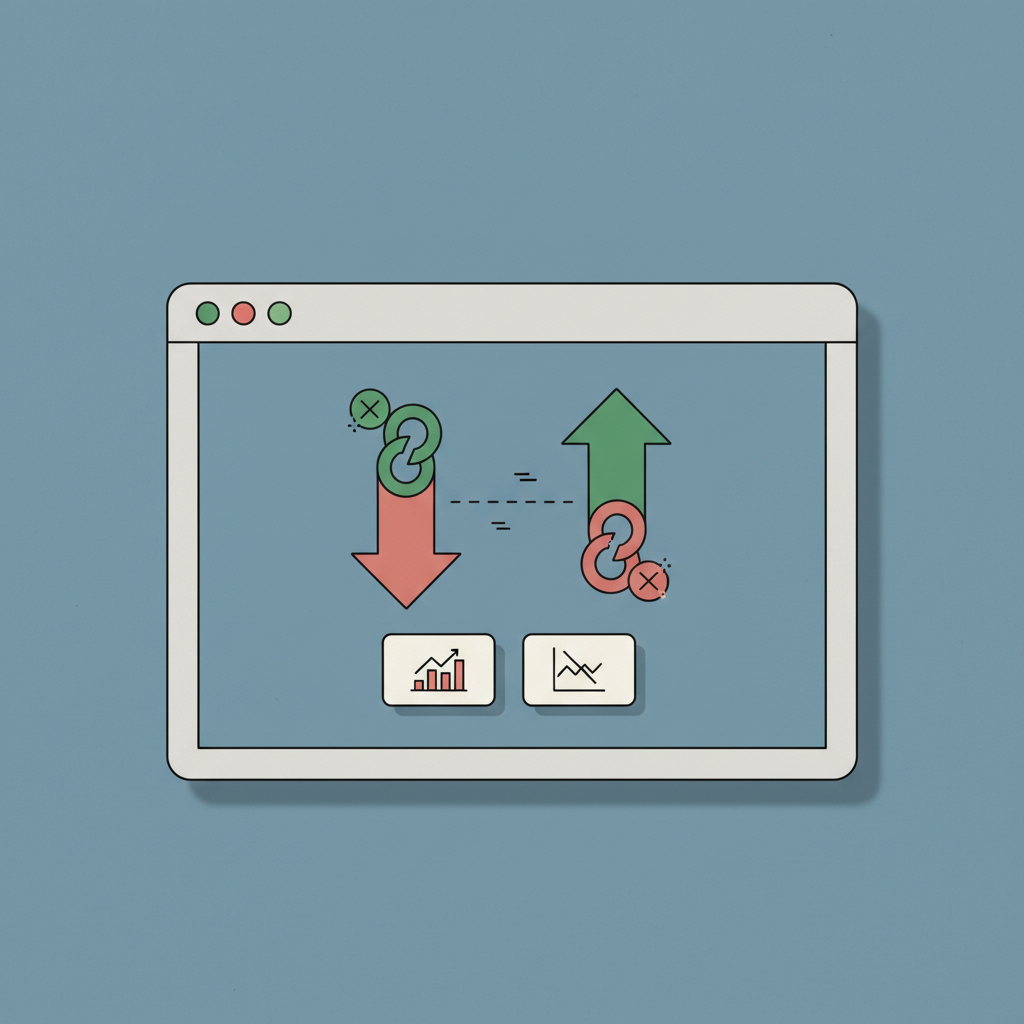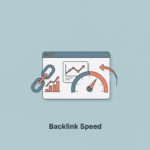In the vast, interconnected world of the internet, links are the currency of authority. They act as pathways for users and as signals of trust for search engines like Google. For anyone running a website or blog, acquiring high-quality backlinks is a cornerstone of a successful search engine optimization (SEO) strategy. One of the oldest tactics in the book for acquiring these links is the link exchange. But what exactly is a link exchange? Is it a powerful growth hack or a risky practice that could get your site penalized? The answer, like most things in SEO, is nuanced.
This comprehensive guide will demystify the world of link exchanges. We will explore the foundational principles behind them, the technical considerations you need to be aware of, and the strategic approach required to engage in them safely and effectively. We’ll break down how to create content that naturally attracts partnership opportunities and how to conduct outreach without sounding spammy. We’ll also delve into the potential pitfalls and how they can impact your site’s long-term health and profitability. By the end of this article, you will have a clear understanding of what link exchanges are, how they fit into a modern SEO strategy, and whether they are the right tactic for your website’s growth.
Introduction: Your Roadmap to a Profitable and Passion-Driven Blog in 2024
Starting a blog in 2024 is an exciting venture, filled with the promise of sharing your passion, building a community, and creating a profitable online business. You’re likely driven by a desire to establish authority in your field, express your creativity, or generate a sustainable income. However, the path to success is often obscured by a fog of conflicting advice, especially when it comes to promotion and SEO. One term you’ll inevitably encounter is “link exchange,” a strategy that has been around since the dawn of search engines.
This guide serves as your clear, step-by-step roadmap to understanding this specific link-building tactic. We will cut through the noise and provide a comprehensive look at link exchanges, not as a shortcut, but as a potential tool in your larger growth strategy. We’ll begin by laying the foundation, understanding what makes a good exchange partner and why relevance is paramount. From there, we’ll cover the technical setup of your own site to make it an attractive partner, the creation of valuable content that others want to link to, and the art of professional outreach. Finally, we’ll explore the connection between link strategies and monetization, ensuring you plan for profit while safeguarding your site’s reputation. This journey will equip you with the knowledge to make informed decisions about link exchanges for your own passion-driven blog.
Phase 1: The Foundation – Choosing a Niche You Can Dominate
Before you can even think about exchanging links, you must first understand the landscape you operate in. In the context of link building, “choosing a niche you can dominate” isn’t just about your blog’s topic; it’s about identifying a topical ecosystem where you can build authoritative and relevant connections. This is the most critical foundational decision in any link exchange strategy because relevance is the number one factor that separates a valuable link from a spammy one.
A link exchange is, at its core, a partnership. You are asking another site owner to vouch for your content, and vice-versa. If a blog about vegan cooking exchanges links with a site about monster truck rallies, the connection is jarring and irrelevant. Search engines are smart enough to see this disconnect, which can devalue both links or even raise a red flag. Therefore, your primary task is to define your niche so tightly that your ideal link partners become obvious.
To do this, you can adapt the ‘Ikigai’ method for link-building partnerships. You’re looking for partners at the intersection of four key areas:
- Topical Relevance (Passion): They cover topics directly related or adjacent to yours.
- Site Authority (Expertise): They have an established presence, good content, and a clean backlink profile. You can use SEO tools to get a rough idea of their Domain Authority or Domain Rating.
- Audience Overlap (Profitability): Their audience would genuinely benefit from discovering your content, and yours from theirs. This shared value is the key to a natural, beneficial exchange.
- Partnership Potential (Audience Demand): They appear open to collaboration. Do they link out to other blogs? Do they engage with their community? This indicates a willingness to form partnerships.
Actionable steps for validating your partnership niche include searching on Google for related topics (e.g., “your keyword” + “resources”), analyzing the backlink profiles of your successful competitors to see who links to them, and exploring social media communities and forums where site owners in your niche congregate.
Phase 2: Technical Setup Made Simple – Platform, Domain, and Hosting
Your blog’s technical health is a crucial factor in its ability to succeed in any SEO endeavor, including link exchanges. A potential partner will consciously or subconsciously evaluate your site’s quality before agreeing to link to it. A slow, insecure, or poorly designed website is an immediate red flag, making your outreach efforts significantly less effective. Think of your technical setup as your digital storefront; if it’s messy and unprofessional, no one will want to be associated with it.
First, let’s discuss the platform. While free platforms like Blogger or WordPress.com are tempting, a self-hosted WordPress.org installation is the professional standard. It gives you complete control over your site, which is vital for link building. You can install any plugin you need, customize your site’s structure, and, most importantly, you own your digital asset completely. This control signals to potential partners that you are serious about your website.
Next are your domain name and web hosting. In simple terms, your domain name is your website’s address on the internet (e.g., yourblog.com), while web hosting is the plot of land where your website’s files live. A premium, brandable domain name (ideally a .com) is more trustworthy than a free subdomain (e.g., yourblog.wordpress.com). Similarly, high-quality hosting ensures your site is fast and reliable. A site that loads slowly or experiences frequent downtime is a poor candidate for a link exchange, as no one wants to send their audience to a frustrating user experience.
Here is a checklist for an SEO-friendly technical setup that attracts link partners:
| Technical Element | Best Practice | Why It Matters for Link Exchanges |
|---|---|---|
| Platform | Self-Hosted WordPress.org | Full control over SEO, design, and plugins. Signals professionalism. |
| Domain Name | Short, brandable, .com extension | Easy to remember and appears more authoritative and trustworthy. |
| Hosting | Reputable, fast provider | Ensures a good user experience for referred visitors and is a Google ranking factor. |
| SSL Certificate | HTTPS enabled | Secures your site and is a baseline requirement for modern websites. |
| Mobile-Friendliness | Responsive design | A majority of traffic is mobile; a non-responsive site is a deal-breaker. |
By investing in a solid technical foundation, you are not just improving your own site’s SEO; you are building an asset that other high-quality websites will be proud to link to. This makes your link exchange outreach far more likely to succeed.
Phase 3: Building Your Blog – Essential Settings, Themes, and Plugins
With a solid technical foundation in place, the next step is to configure your blog’s internal structure and tools. These elements directly impact user experience and search engine crawlability, which are key factors potential link partners will consider. A well-organized, professional-looking site is inherently more “link-worthy.”
First, let’s tackle some essential WordPress settings. One of the most important initial steps is setting your permalink structure. By default, WordPress might use a plain or dated structure (e.g., yourblog.com/?p=123). You should immediately change this to “Post name” in Settings > Permalinks. This creates clean, keyword-rich URLs (e.g., yourblog.com/what-are-link-exchanges), which are better for both users and SEO. Additionally, ensure your site title, tagline, and timezone are correctly configured in Settings > General. These small details contribute to your site’s overall professionalism.
The theme you choose is your blog’s digital body language. It dictates the layout, design, and user experience. A cluttered, outdated, or slow-loading theme can kill your credibility. For a new blog, you don’t need to spend a fortune. There are excellent free themes like Kadence and Astra that are lightweight, customizable, and professional. Premium options like GeneratePress offer even more flexibility and support. The key is to choose a theme that is clean, easy to navigate, and fast.
Plugins extend the functionality of your WordPress site. However, it’s crucial to be selective and only install what you truly need, as too many plugins can slow down your site. For a blog focused on growth and link building, a few categories of plugins are essential:
| Plugin Category | Recommended Tools | Purpose in a Link Exchange Strategy |
|---|---|---|
| SEO | Yoast SEO or Rank Math | Helps optimize on-page SEO for your content, making it more attractive to link to. |
| Performance/Caching | WP Rocket or LiteSpeed Cache | Drastically improves site speed, a key factor for user experience and SEO. |
| Security | Wordfence Security | Protects your site from hacks, ensuring it remains a safe and trustworthy resource. |
| Contact Forms | WPForms or Contact Form 7 | Provides a professional way for potential link partners to contact you. |
| Broken Link Checking | Broken Link Checker | Helps you find and fix broken outbound links, maintaining your site’s quality. |
By carefully configuring these settings, choosing a professional theme, and installing a curated set of essential plugins, you are building a high-quality digital home. This quality is a prerequisite for any successful link exchange campaign, as it demonstrates to other site owners that you are a credible and valuable partner.
Phase 4: The Content Engine – Crafting a Winning Content Strategy
Content is the heart of any successful blog and the primary asset you bring to a link exchange negotiation. Without high-quality, valuable content, you have nothing to offer a potential partner. A winning content strategy for link building is not about churning out endless short posts; it’s about strategically creating authoritative resources that other people in your niche will be compelled to reference and link to. This is your “content engine.”
The most effective approach for this is the ‘Topic Cluster’ or ‘Content Pillar’ model. This involves creating one major, in-depth piece of content—a pillar post—on a broad topic. Then, you create several shorter, related articles—cluster posts—that cover specific subtopics in more detail. Each cluster post links up to the main pillar post. This structure does two things: it organizes your site logically for users and search engines, and it establishes your blog as an authority on that topic. When you approach another site for a link exchange, you can offer them a link to your comprehensive pillar page, which is a much more valuable resource than a simple blog post.
Of course, you need to know what topics to build your pillars around. This is where keyword research comes in. For a beginner, you don’t need expensive tools. You can start with free resources:
- Google Keyword Planner: Gives you data on search volume and competition.
- AnswerThePublic: Visualizes the questions people are asking around your topic.
- Google’s “People Also Ask” and “Related Searches”: These sections on the search results page are a goldmine for content ideas.
When researching keywords, it’s crucial to analyze search intent—the “why” behind a search query. Understanding intent allows you to create content that perfectly matches what the user is looking for, making it a more valuable and linkable resource.
| Search Intent Type | User Goal | Content to Create |
|---|---|---|
| Informational | To learn something or find an answer. | “How-to” guides, tutorials, ultimate guides, “what is” articles. |
| Commercial | To investigate products or services before buying. | Product reviews, comparison articles, “best of” lists. |
| Navigational | To find a specific website or page. | A well-structured homepage and clear contact/about pages. |
| Transactional | To complete a purchase or action. | Product pages, service pages, sign-up forms. |
For link building, informational content is king. Creating the definitive guide on a topic makes your article the go-to resource. When a fellow blogger is writing about a related subject, they will be much more inclined to link to your comprehensive guide than to a competitor’s thin article. This is the foundation of a successful and sustainable link exchange strategy: create value first.
Phase 5: Creating and Publishing Your First Cornerstone Articles
Once your content strategy is mapped out, it’s time to create the actual assets you will use for your link-building efforts. Your first 5-10 published articles should be ‘Cornerstone Content’. This isn’t just any blog post; it’s your most important, in-depth, and valuable work. Think of it as the flagship content that represents the best of what your blog has to offer. These are the articles you will proudly present to potential link exchange partners, demonstrating your expertise and the value you can provide to their audience.
Cornerstone content is typically longer, more comprehensive, and better researched than a standard blog post. It aims to be the best resource on the internet for its specific topic. For example, instead of “5 Quick Tips for Healthy Eating,” a cornerstone article would be “The Ultimate Guide to Meal Planning for a Healthy Lifestyle,” complete with charts, recipes, and scientific references.
To ensure your cornerstone content is effective, it needs to be well-structured. A proven template for a high-value blog post includes:
- Compelling Headline: Use a title that grabs attention and includes your primary keyword.
- Short Introduction: Hook the reader, state the problem you’re solving, and briefly explain what they will learn.
- Scannable Body: Use clear headings (H2) and subheadings (H3, H4) to break up the text. Use short paragraphs, bullet points, and bold text to make the content easy to digest.
- Clear Conclusion: Summarize the key takeaways and provide a clear call-to-action (CTA), such as asking a question to encourage comments or suggesting they read a related article.
As you write, you must also incorporate on-page SEO best practices. This ensures search engines can understand your content and helps it rank, making it more visible and attractive to potential partners.
- Keyword Usage: Include your primary keyword naturally in your title, meta description, the first paragraph, and a few subheadings.
- Meta Description: Write a compelling 150-160 character summary that entices users to click from the search results.
- Internal Linking: Link to other relevant articles on your own blog. This helps users and search engines navigate your site and builds your topic authority.
- Image Alt Text: Add descriptive alt text to all your images. This helps with accessibility and image SEO.
By focusing your initial efforts on creating a handful of truly exceptional cornerstone articles, you build a powerful foundation for your link exchange outreach. You’re not just asking for a link; you’re offering a genuinely valuable resource.
Phase 6: Promotion and Traffic – Getting Your First 1,000 Visitors
Publishing great content is only half the battle. Many guides on blogging stop right here, but this is where the real work of promotion begins. For link exchanges, this phase is about outreach and relationship building. You have your valuable cornerstone content ready; now you need to get it in front of the right people—the owners of other high-quality sites in your niche.
Before you ask for a link, you need to build a relationship, however small. Cold outreach can work, but warm outreach is far more effective. Here are a few beginner-friendly strategies to get on the radar of potential partners:
- Targeted Social Media Sharing: Don’t just blast your link everywhere. Share your content on platforms where your ideal partners are active. For a B2B blog, this might be LinkedIn. For a visual niche like food or travel, Pinterest and Instagram are key. When you share, tag or mention other creators or brands that you referenced in your article. This is a soft way of letting them know you appreciate their work.
- Engage in Online Communities: Participate genuinely in relevant Reddit subreddits, Facebook Groups, or niche forums. Answer questions and provide value. Once you’ve established yourself as a helpful member, you can share your content when it’s directly relevant to a discussion. This builds credibility and can lead to natural links and partnership opportunities.
- Basic Email Outreach: This is the most direct method. Identify a specific, non-competing blog post on a target site where a link to your cornerstone article would add value for their readers. Craft a personalized email. A simple, effective outreach email follows this structure:
- Personalized Opening: Mention something specific you liked about their article or site.
- The Value Proposition: Briefly introduce your resource and explain why it would be a valuable addition for their audience.
- The Ask: Politely suggest where your link could fit. Keep it simple and don’t be demanding.
- The Reciprocal Offer (The Exchange): Mention that you’d be happy to find a relevant place to link back to their content from one of your articles.
Throughout this process, it’s crucial to start building your own email list from day one using a service like MailerLite or ConvertKit. An email list is a direct line of communication with your audience. It’s an asset you own, and it can be a powerful tool for promoting new content and building a loyal community that will help amplify your message.
Phase 7: A Primer on Monetization – Planning for Profit from the Start
While link exchanges are primarily an SEO tactic to increase organic traffic, it’s essential to understand how they fit into your blog’s overall monetization strategy. A business-focused mindset from the beginning helps you make smarter decisions. The traffic you gain from improved search rankings is the foundation upon which all monetization models are built. More targeted traffic means more potential revenue.
However, this is also where the greatest risks of link exchanges lie. Google’s Webmaster Guidelines are very clear about “excessive link exchanges” or “partner pages exclusively for the sake of cross-linking.” Engaging in large-scale, low-quality, or irrelevant link swaps can be seen as a manipulative scheme designed to game the algorithm. This can lead to a manual penalty from Google, which can decimate your search rankings and, consequently, your income.
Therefore, “planning for profit” in the context of link exchanges means prioritizing quality and relevance to avoid penalties. A good link exchange should look natural. The link should be editorially placed within the body of a relevant article and provide genuine value to the reader. It should be a partnership you would still make even if Google didn’t exist.
Let’s look at the primary blog monetization models and how a smart link strategy supports them:
| Monetization Model | Description | How Link Exchanges Help (When Done Right) |
|---|---|---|
| Display Advertising | Placing ads on your site (e.g., Google AdSense, Ezoic, Mediavine). | Higher search rankings lead to more traffic, which directly increases ad impressions and revenue. |
| Affiliate Marketing | Promoting other companies’ products and earning a commission on sales. | Increased traffic to your review and comparison posts leads to more affiliate clicks and sales. |
| Digital Products | Selling your own eBooks, courses, templates, etc. | Authority-building links establish you as an expert, making people more likely to buy from you. |
| Services | Offering coaching, consulting, or freelance services. | Higher visibility in search results for service-related keywords brings in qualified leads. |
For new blogs, affiliate marketing is often an excellent starting point. By building high-quality cornerstone content and acquiring authoritative links to it, you can start ranking for commercial-intent keywords and generating revenue relatively early. The key is to view link exchanges not as a transactional numbers game, but as a strategic relationship-building process that enhances your site’s authority, traffic, and long-term profitability.
Frequently Asked Questions (FAQ)
Are link exchanges bad for SEO?
They can be, if done improperly. Google’s guidelines warn against “excessive link exchanges” that are created solely to manipulate search rankings. If you swap links with irrelevant, low-quality sites, or create dedicated “partner links” pages, you risk a penalty. However, a natural, editorially-placed link exchange between two high-quality, topically relevant websites, where the link provides genuine value to the reader, is generally considered safe and can be beneficial for SEO.
What’s the difference between a link exchange and guest posting?
In a traditional link exchange (or reciprocal linking), Site A links to Site B, and Site B links back to Site A. It’s a direct two-way trade. In guest posting, the owner of Site A writes a full article for Site B. Within that article, they typically include one or two links back to their own site (Site A). Site B gets free, high-quality content, and Site A gets a backlink. While guest posting is a form of link building, it’s generally seen as more natural and value-driven than a direct link swap, as it involves the creation of a new, valuable asset.
How many link exchanges are too many?
There is no magic number. The focus should be on quality over quantity. A handful of high-quality, relevant links from authoritative sites is far more valuable than hundreds of low-quality reciprocal links. A healthy backlink profile is diverse, containing links from various sources (guest posts, resource pages, natural mentions, etc.), not just reciprocal links. If the vast majority of your backlinks are from direct exchanges, it could look unnatural to search engines and raise a red flag. Prioritize building relationships and acquiring links that make sense editorially.
Conclusion: Your Blogging Journey Starts Now
We’ve journeyed through the complex world of link exchanges, reframing it from a simple transaction to a strategic component of your blog’s growth. We’ve seen that a successful and safe link-building strategy is built on a series of deliberate phases: establishing a foundational niche for relevant partnerships, creating a technically sound and professional website, engineering a content strategy that produces link-worthy cornerstone articles, and engaging in professional promotion and outreach. Finally, we connected these efforts to a monetization plan that prioritizes long-term health over short-term gains.
The most important takeaway is that blogging, and by extension link building, is a marathon, not a sprint. The days of easily manipulating search rankings with low-effort tactics are long gone. Today, success is built on consistency, quality, and genuine relationship-building. The best link exchanges feel less like a trade and more like a natural collaboration between two creators who respect each other’s work and want to share valuable resources with their respective audiences.
Don’t let analysis paralysis hold you back. The knowledge you’ve gained from this guide is your starting block. Take the first step. Define your niche, set up your blog correctly, and start creating that first piece of cornerstone content. Your journey to building an authoritative, traffic-driving, and profitable blog starts now.







